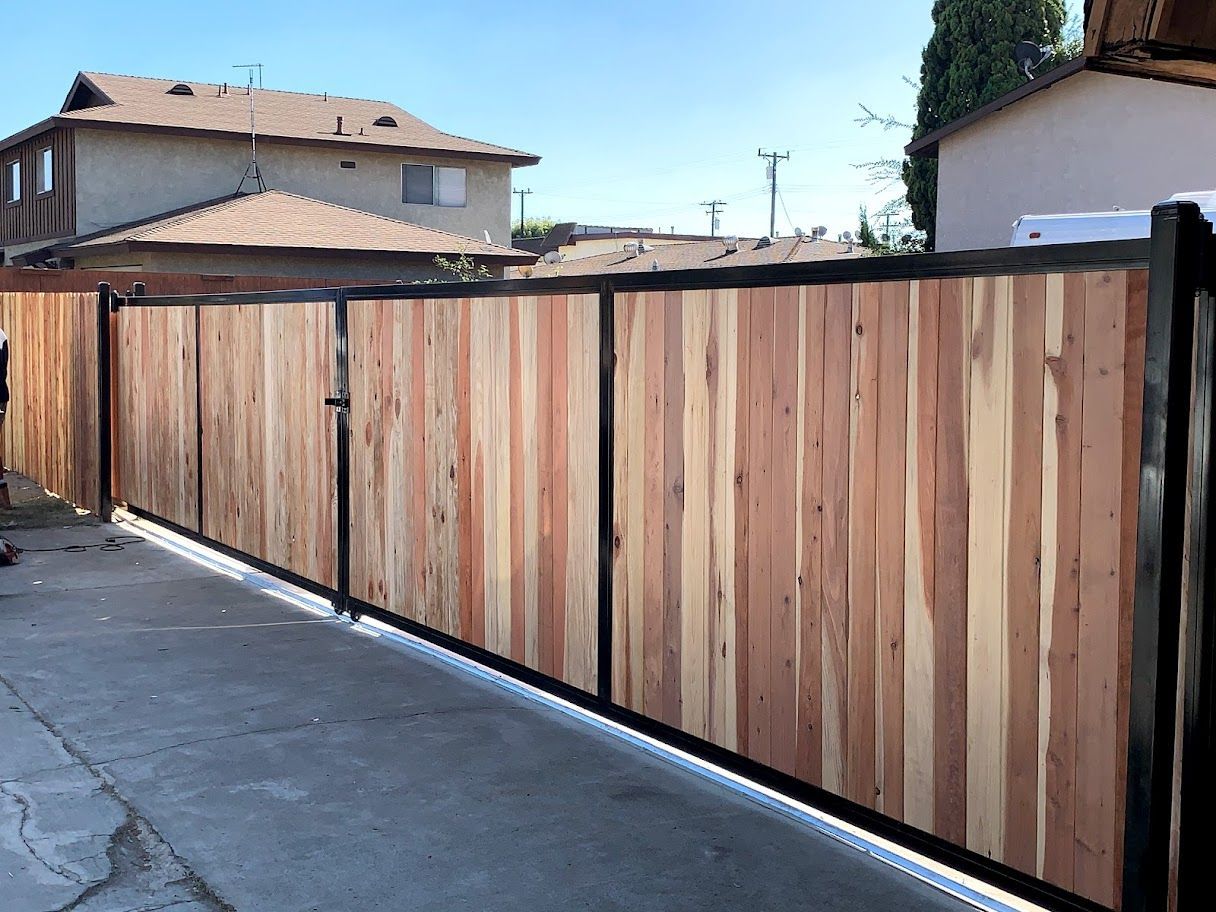All Categories
Featured
Installing a fencing is an exceptional means to boost your residential property's aesthetic appeals, safety, and privacy. Before the installment begins, there are numerous vital steps you need to take to ensure the process runs efficiently. Correct preparation not only aids prevent hold-ups and added expenses yet also guarantees that your fencing is installed properly and lasts for several years. Below's an extensive overview to preparing your property for a fence installation.
You need to likewise look for below ground energies, such as water, gas, and electrical lines, to prevent damaging them during the setup process. The majority of local utilities provide a "call-before-you-dig" solution, where they will note the location of utility lines on your residential or commercial property.
![]()
For circumstances, if you require personal privacy, a solid timber or vinyl fencing would be perfect. Chain-link or functioned iron might be the best selection if security is your priority. Your contractor will likewise assist establish the height of the fence and any special attributes, such as gateways or ornamental accents. Comprehending your goals for the fence will ensure the last product meets your requirements.
![]()
Conclusion. Proper preparation is vital to a successful fencing setup. By recognizing local laws, noting home lines, removing the setup location, making certain equipment gain access to, completing the style and products, and educating your neighbors, you can establish your project up for success. Putting in the time to prepare your residential or commercial property makes certain that the installation procedure is smooth, efficient, and results in a fence that boosts your building's worth and safety.
- Understand Local Rules and Permits. Prior to continuing with the fence installation, it's critical to acquaint yourself with neighborhood zoning regulations and get any type of needed licenses. Several municipalities require house owners to look for a license prior to setting up a fence, particularly if the fence surpasses a certain height. Regulations may likewise dictate the kind of product you can use, the location of the fencing (whether it remains in the front backyard or along a home line), and the height limits for fencings. Be certain to consult your neighborhood federal government or house owners organization (HOA) to make sure conformity with any kind of guidelines or guidelines that might use in your area.
- Mark Your Home Lines. It's necessary to understand the specific limits of your residential property prior to starting the fence installation. Numerous fence installation specialists also offer residential property line noting services.
- Clear the Installment Area. A huge part of preparing your residential property for a fencing installation is clearing the installation area. This involves removing any type of trees, bushes, rocks, or debris that may obstruct the fencing installation. Overgrown plants, specifically, can make the installation process difficult and extra taxing, so it is essential to reduce any type of plants or vegetation prior to the job begins. Furthermore, you should remove any existing fences, old articles, or structures that are in the method. Clearing the area beforehand allows your contractor to work successfully and aids maintain costs down.
You need to likewise look for below ground energies, such as water, gas, and electrical lines, to prevent damaging them during the setup process. The majority of local utilities provide a "call-before-you-dig" solution, where they will note the location of utility lines on your residential or commercial property.
- Prepare For Equipment Accessibility. The installment of a fencing will likely need heavy machinery, such as vehicles for carrying products and tools for digging openings. If your building has a slim driveway or limited gain access to points, notify your service provider in advance so they can intend the best route for delivery and installment.

- Settle Your Fencing Design and Products. The next action is to complete the design and material selections for your fence. Think about the purpose of your fencing-- whether it's for personal privacy, safety, design, or merely marking limits. Review your choices with the contractor to identify which material is ideal suited for your needs. Common fence products consist of timber, vinyl, chain-link, and aluminum, each offering distinctive benefits.
For circumstances, if you require personal privacy, a solid timber or vinyl fencing would be perfect. Chain-link or functioned iron might be the best selection if security is your priority. Your contractor will likewise assist establish the height of the fence and any special attributes, such as gateways or ornamental accents. Comprehending your goals for the fence will ensure the last product meets your requirements.
- Inform Your Next-door neighbors. If your fencing will be set up along a common building line, it's considerate to educate your next-door neighbors beforehand. Having a discussion concerning the fencing setup can help avoid conflicts or misconceptions. Go over the suggested layout, timeline, and any prospective influence the setup could carry their residential property. While you do not require your next-door neighbors' approval to mount a fence on your home, keeping them in the loophole is an excellent way to maintain great relations.
- Plan For Post-Installation Upkeep. Once your fencing is installed, it will require routine maintenance to maintain it in great condition. Depending on the type of material, you might need to tarnish the timber or repaint, clean plastic or aluminum, or use safety finishes to prevent rust. Ensure you have a plan for recurring upkeep and examinations to capture any type of problems early. Regular upkeep will certainly guarantee that your fence remains functional and cosmetically pleasing for many years.

Conclusion. Proper preparation is vital to a successful fencing setup. By recognizing local laws, noting home lines, removing the setup location, making certain equipment gain access to, completing the style and products, and educating your neighbors, you can establish your project up for success. Putting in the time to prepare your residential or commercial property makes certain that the installation procedure is smooth, efficient, and results in a fence that boosts your building's worth and safety.
Latest Posts
Don’t Miss Exclusive Auto Repair Offers in Chicago at Montclare Auto Repair
Published en
1 min read
Check Out the Best Auto Repair Offers in Montclare, Chicago
Published en
1 min read
Learn About Premier Auto Repair Care at Montclare Auto Repair – Expert Care for Your Vehicle
Published en
1 min read
More
Latest Posts
Don’t Miss Exclusive Auto Repair Offers in Chicago at Montclare Auto Repair
Published May 25, 25
1 min read
Check Out the Best Auto Repair Offers in Montclare, Chicago
Published May 24, 25
1 min read
Learn About Premier Auto Repair Care at Montclare Auto Repair – Expert Care for Your Vehicle
Published May 24, 25
1 min read